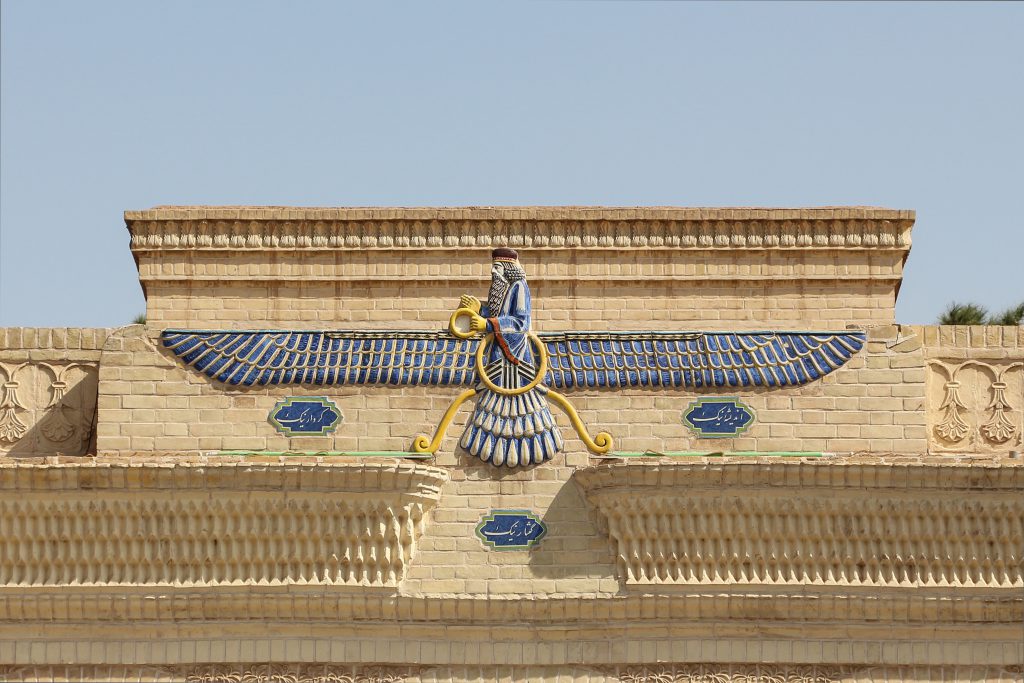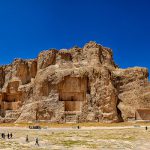
Zoroastrian Fire Temple of Yazd | Zoroastrianism Temple | Yazd Atash Behram
Interested in the world’s longest-burning sacred fire? Then the Zoroastrian Fire Temple of Yazd (also known as Yazd Atash Bahram, Varharam Fire Temple or Ateshkadeh, or Zoroastrian Fire Temple of Yazd or Zoroastrianism Fire Temple) is a must-visit for you! It’s not just the unique look of adobe houses and charming wind towers that put Yazd in the golden triangle of Iran. The gorgeous city has also been home to the largest group of Zoroastrians, leaving it with precious heritages. To discover the charms of this fire temple, I’ll first tell you the story of Zoroastrianism, and the importance of fire and fire temples in the ancient religion.
Contents
- 1 Why Visit the Zoroastrian Fire Temple of Yazd?
- 2 The Story of Zoroastrianism
- 3 The Story of Zoroastrianism Fire and Zoroastrian Fire Temples
- 4 The Story of Zoroastrian Fire Temple of Yazd
- 5 Zoroastrian Fire Temple of Yazd – The World’s Longest-burning Sacred Fire
- 6 What You’ll See in Zoroastrian Fire Temple of Yazd
- 7 The Rituals in Yazd Fire Temple – Yazd Atash Behram
- 8 More About the Zoroastrian Fire Temple of Yazd
- 9 Like to visit the Zoroastrian Fire Temple of Yazd?
- 10 Interested in Zoroastrian culture?
- 11 Zoroastrian tours
- 12 Yazd Atash Behram on Map

sacred fire in Zoroastrian Fire Temple of Yazd – Iran
Why Visit the Zoroastrian Fire Temple of Yazd?
- The world’s oldest sacred fire is burning in the Zoroastrian fire temple of Yazd (Yazd Atash Behram)
- The Zoroastrian fire temple of Yazd introduces you to one of the most influential religions in the world
- You’ll visit Zoroastrians and gain a genuine understanding of their beliefs and customs

The main entrance of Yazd Fire Temple – Iran
The Story of Zoroastrianism
Ancient Persian spiritual leader, Zarathustra, gave birth to Zoroastrianism, the world’s first faith with a belief in only one God. With roots possibly as old as 4000 years, it served as the official religion of Achaemenid and Sassanid Empires. Then the Muslim Conquest of Persia in the Middle Ages changed everything. This change brought about a decline in the practice of Zoroastrianism. So, the remaining believers gradually clustered around cities like Yazd or migrated to India. With a belief in a benevolent God known as Ahura Mazda (the Wide Lord), the faith is centered on the eternal battle of the good and the evil and humankind’s free will in joining either side. Following the path of “Good Thoughts, Good Words, Good Deeds”, and respecting nature and the 4 natural elements (fire, water, soil and air) are of the teachings of Zoroastrianism.

the most well-known symbols of Iran (Persia), and Zoroastrianism
The Story of Zoroastrianism Fire and Zoroastrian Fire Temples
Respect for fire among Iranians has its roots in pre-Zoroastrian mythology. It also comes from the practice of keeping a hearth fire on as a source of life, warmth and light in cold winters. In Zoroastrianism, fire stands for the light of Ahura Mazda in the eternal battle between the good and the evil, so it shall never be extinguished. As the medium between the creator and mankind, fire is highly respected and prayers are performed in its presence.

A Zoroastrians ceremony, gathering around fire and praying together, Iran
Fire has been so cherished in Zoroastrianism, but early Zoroastrians prayed at their homes or on top of hills. Surprisingly, fire temples were a later development that were especially prominent in Sassanid period. Yet some fire temples even date back to pre-Sassanid era. These holy structures have been simple and free of ornamentation because their primary purpose is housing a sacred fire.

Fire Temple of Isfahan, a Sassanid-era archaeological complex located on a hill, Iran
The Story of Zoroastrian Fire Temple of Yazd
It was an Iranian Zoroastrian named Jamshid Amanat who was behind the construction of the Fire Temple of Yazd. He and his brothers donated a piece of land for setting up the temple. But they needed a budget. That’s why Jamshid made 5 difficult journeys to India to get the support of the Parsi Zoroastrians who lived there. On his last journey, his efforts paid off and he returned to Iran with enough fund to fulfill his dream. The construction of Yazd Ateshkadeh under his close observance finished in 1934. A few years later, a sacred fire was also brought there, giving the place its present sanctity. Like to know the story of this sacred fire? Read on then…

Zoroastrian priests pray to honor the dead inside a Zoroastrian Fire temple in Pune, India, on Aug. 18, 2010
Zoroastrian Fire Temple of Yazd – The World’s Longest-burning Sacred Fire
The Fire Temple of Yazd houses the world’s oldest sacred fire and Iran’s only Atash Bahram (fire of victory). Atash Bahram, the holiest fire used in a fire temple, makes the Ateshkadeh housing it stand out among others. To consecrate and unite fires that make up Atash Bahram, 32 Moubeds (Zoroastrian priests) gather fires from sixteen different sources (lightning bolt, funeral pyre, kitchen hearth and furnaces used by different trades) and perform certain rituals on them. They say that this fire has been burning since Sassanid era (470 AD) and that it traveled to different fire temples until it found its final home in Yazd in 1940.

Sacred Fire is protected by Zoroastrians in Yazd Fire Temple photo – Yazd Atash Behram
What You’ll See in Zoroastrian Fire Temple of Yazd
Like other Zoroastrian fire temples, Yazd Fire Temple is as simple as it could be. In the center of a large courtyard filled with evergreen trees, you’ll find a round pool and a simple building that houses Iran’s most sacred fire. The building showcases Persia’s best-known symbol, Farvahar (the figure of a bearded man with outstretched wings, holding a ring), on top of the entrance. Together with the stone pillars and the few steps that lead up to the porch, the Farvahar sign has given a charming New-classical look to the building. You can also find the architectural elements of Achaemenid era and Indian Parsi fire temples in the building. Inside, from behind glass walls, you’ll see the holy fire burning inside a bronze vessel. Next to the building, you’ll find a small museum that features Zoroastrian relics, beliefs, traditions and attire.

Farvahar sign on Yazd Fire Temple – Zoroastrian Fire Temple of Yazd
The Rituals in Yazd Fire Temple – Yazd Atash Behram
Yazd is now home to the largest community of Zoroastrians. Obviously, its fire temple is highly visited by both followers and non-followers of the faith, especially during Nowruz holidays. At prayer times, you can see Zoroastrian men and women entering the place, praying, and offering scented wood to the fire. You can identify them with their white (or bright-color) clothing and bare feet. Men wear a white cap (that looks like the Jewish Kippah) and women wear a white scarf. In the glass chamber, where only the priest who tends the fire is allowed, the only lighting comes from the sacred fire.

Zoroastrians gathering in Yazd Fire Temple for a special ritual, Iran – Zoroastrain Fire Temple of Yazd
Like in any other spiritual place in the world, in an Ateshkadeh, you’ll have to be respectful of beliefs. Being clean, removing your shoes in the main building, speaking quietly and courteously, and not turning your back to the fire are of the general rules.
More About the Zoroastrian Fire Temple of Yazd
Open Hours
7:30 a.m. to 9:30 p.m.
The Nearby Attractions
A ten-minute walk from Yazd Fire Temple can take you to the Museum of Zoroastrians History and Culture where you can learn more about this ancient religion. The historical tower of Yazd, Markar Clock Tower, is also up the street from the Fire Temple. Dolat Abad Garden, the UNESCO-listed Persian Garden of Yazd, and the historical Amir Chakhmaq Complex are also in a walking distance.
Where to Eat Near Yazd Fire Temple
Shater Abbas Restaurant
Sarv Restaurant
Shahmardan Restaurant Shaghayegh Restaurant
Like to visit the Zoroastrian Fire Temple of Yazd?
Then join our Discovering Zoroastrianism tour or one of our multi-day Cultural Tours.
Interested in Zoroastrian culture?
You can book a place on our few-hour Zoroastrian Ceremonies or Cooking Class with Zoroastrians tour.
Keywords: fire temple Yazd, Zoroastrian temple, fire temple Zoroastrianism, Yazd Zoroastrian fire temple, oldest Zoroastrian fire temple, fire temple Iran, fire in Zoroastrianism, Bahram fire temple, sacred fire Zoroastrianism, Zoroastrianism place of worship, what is fire temple, Zoroastrian fire temple Iran, fire temple of Zoroastrianism, Zoroastrianism temple name, Zoroastrian temple Iran














